Copyright 2020 - 2021 irantour.tours all right reserved
Designed by Behsazanhost
Kashan is sunk in the smell of vernal Paradise flowers
Kashan is sunk in the smell of vernal Paradise flowers
Every year in May and April, Kashan hosts one of the oldest and most fragrant traditional ceremonies in Iran. In this traditional ceremony, hundreds of tons of flowers are transformed into rose perfume and other herbal products. At this time, different cities and villages of Kashan welcome guests with the purest rose water and the most fragrant flowers. Every year in May and April, Kashan hosts one of the oldest and most fragrant traditional ceremonies in Iran.
In this traditional ceremony, hundreds of tons of flowers are transformed into rose perfume and other herbal products. At this time, different cities and villages of Kashan welcome guests with the purest rose water and the most fragrant flowers. Kashan cities, during the spring, are filled with excitement and host thousands of domestic and foreign tourists. From the middle of May to the end of June, it is the season of the rosewater extraction festival in the cities of Qamsar, Niasar, and the surrounding villages. The scent of Damask roses fills the city, many thanks to the coming of spring.
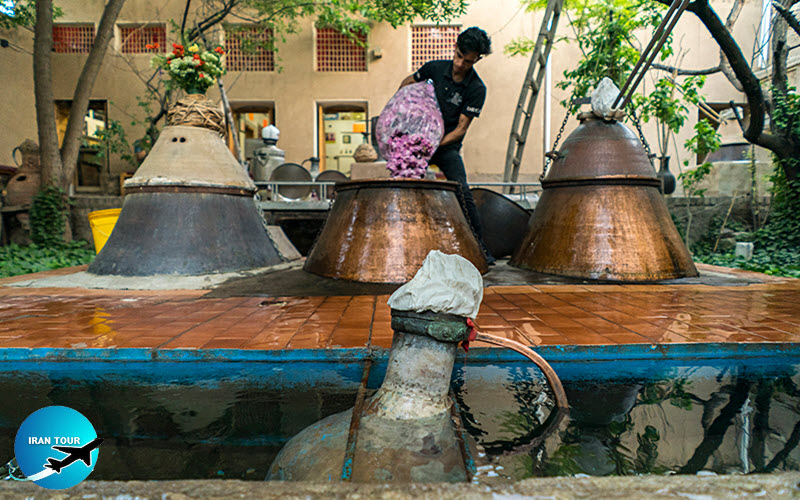 |
This ceremony is one of the most popular festivals that is held in different cities and mountainous villages of Kashan. The most important cities to do this ceremony are Qamsar( Qamsar rose water is truly reputed in the world and in terms of quality), Niasar, Kamo, Vadeqan, and Barzak. Although there are different factories to produce the best and high-quality Rosewater and other herbal products, the traditional method of rosewater making has its own fans. They like to walk among the dense flower gardens, immerse themself in various flower smells, pick the colorful flowers, and buy the best rosewater and perfumes. Visiting the magnificent landscape of these farms, smelling their stunning fragrance, breathing the spring weather, and watching the rosewater extraction festival in Qamsar can be one of the most exciting things that every tourist will face when entering this dreamland.
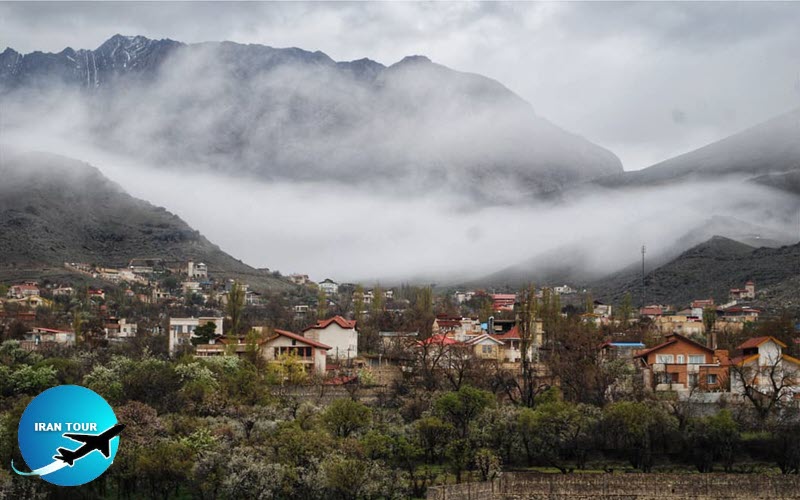 |
Where to Go to Visit Kashan Rose Water Festival
Qamsar
If you are going to visit the most beautiful flower gardens of Kashan, get acquainted with all kinds of flowers, and prepare the best perfume and rose water, the beautiful gardens of Qamsar will be your best destination.
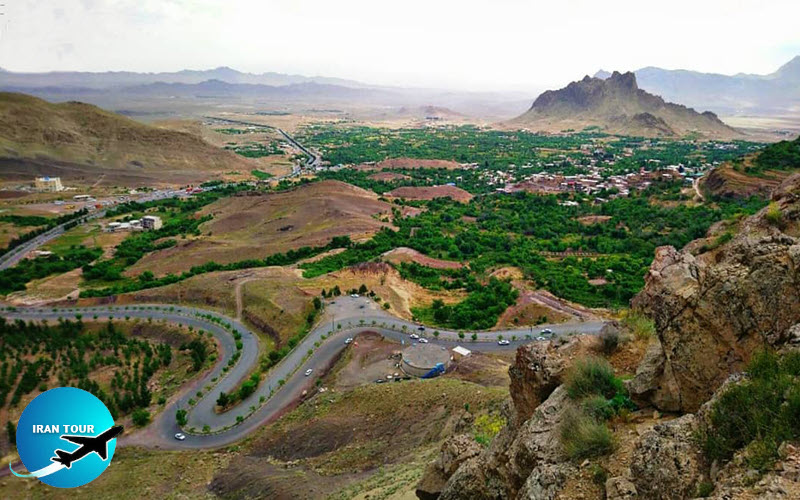 |
Niasar
If you plan to visit amazing historical sites plus an interesting rosewater ceremony Niasar City 25 Km from Kashan is the best destination. This mountainous city with various gardens, picturesque views, and unique historical monuments(Zoroastrian fire temple, Reis cave, old mosque, old Bath, waterfall) can satisfy all visitors.
Some villages of Kashan such as Kamo, Wadghan, and Barzak also hold this ceremony with traditional methods.
The best time to visit
It is directly related to the weather. If the hot season starts late, the Rose Water Festival will also be postponed and if summer arrives ahead of schedule, the festival will be held earlier.
Usually, mid-May to mid-June is the best time for holding Iran rose water festival.
 |
What to do in Kashan?
Many travelers opt to bypass Kashan on their journeys between Tehran, Esfahan, and Yazd, but this delightful oasis city on the edge of the Dasht-e Kavir is one of Iran's most alluring destinations. It not only boasts a cluster of architectural wonders, an atmospheric covered bazaar, and a Unesco-recognized garden, but it also offers some of central Iran's best traditional hotels. During the Seljuk period (AD 1051-1220) Kashan became famous for its textiles, pottery, and tiles, reaching high levels of accomplishment in each of these cottage industries. Currently, local textile artisans are enjoying something of a renaissance of interest in their work, but mechanization has largely led to the demise of this ancient craft. Today the town is more widely known as a major center for the production of rose water, which is sold at outlets around the main tourist attractions and at dedicated stores in the bazaar.
 |
Bagh E Fin
Designed for Shah Abbas I in the 16th century, this delightful garden with its symmetrical proportions, old cedars, spring-fed pools, and fountains is renowned as being the very epitome of the Persian garden and its evocation of heaven. Given its influence in the planning of gardens as far afield as India and Spain, Fin Garden, which lies in the suburb of Fin, 9km southwest of central Kashan, has justly earned a place on the Unesco World Heritage list.
In contrast to the arid location, the garden flows with crystal-clear warm water channeled from a natural spring through a series of turquoise-tiled pools and fountains and continuing along the main road in Jubs (Canals, Pronounced 'Joobs'). The evergreen trees inside the garden are up to 500 years old, and the profusion of complementary deciduous trees contributes to a garden that works to please year-round.
The highlights of the garden are two pavilions: the Shotor Gelou, a two-story pool house with water running through the middle of the ground floor, and a recreational pavilion at the rear of the garden. Built-in the later Qajar period, this delightful building sports an elaborately painted dome of outdoor vignettes. In the adjoining rooms, stalactite ceilings and colored glass windows play a role in keeping visitors content with blue, white, and green glass chosen to be cool and soothing and to make the room look bigger; in contrast, red, orange, and yellow glass has the opposite effect, making the room seem warmer in winter. Interestingly, red and blue combined apparently confuse insects and ward off mosquitoes.
Many Iranians head to the hammam complex along one side of the garden, famous as the place where the nationalist Mirza Taqi Khan, more commonly known as Amir Kabir, was murdered. Amir Kabir served as prime minister under Nasir Od-Din Shah from 1848 to 1851. He was a modernizer who instituted significant changes, especially in the fields of education and administration, but his popularity was not appreciated in the royal court and the shah's mother eventually persuaded her son that he had to go. Amir Kabir was imprisoned in Fin Garden and eventually murdered in the bathhouse. Inside, mannequins posed in scenes from the drama form the backdrop of many a selfie taken by those coming to pay homage to a hero.
With extra time to spare, the modest Kashani National Museum, which occupies a small pavilion in the grounds, is worth a quick visit. It showcases some fine examples of Kashani velvet and brocade and has some ceramics and calligraphy. A scale model of the garden helps to show its perfect proportions from an aerial perspective. Don't leave the garden without pausing at the Fin Garden teahouse, which is set within its own enchanted little garden. Located near the source of the spring, the current is thick with warm-water-loving fish and shaded with aged trees.
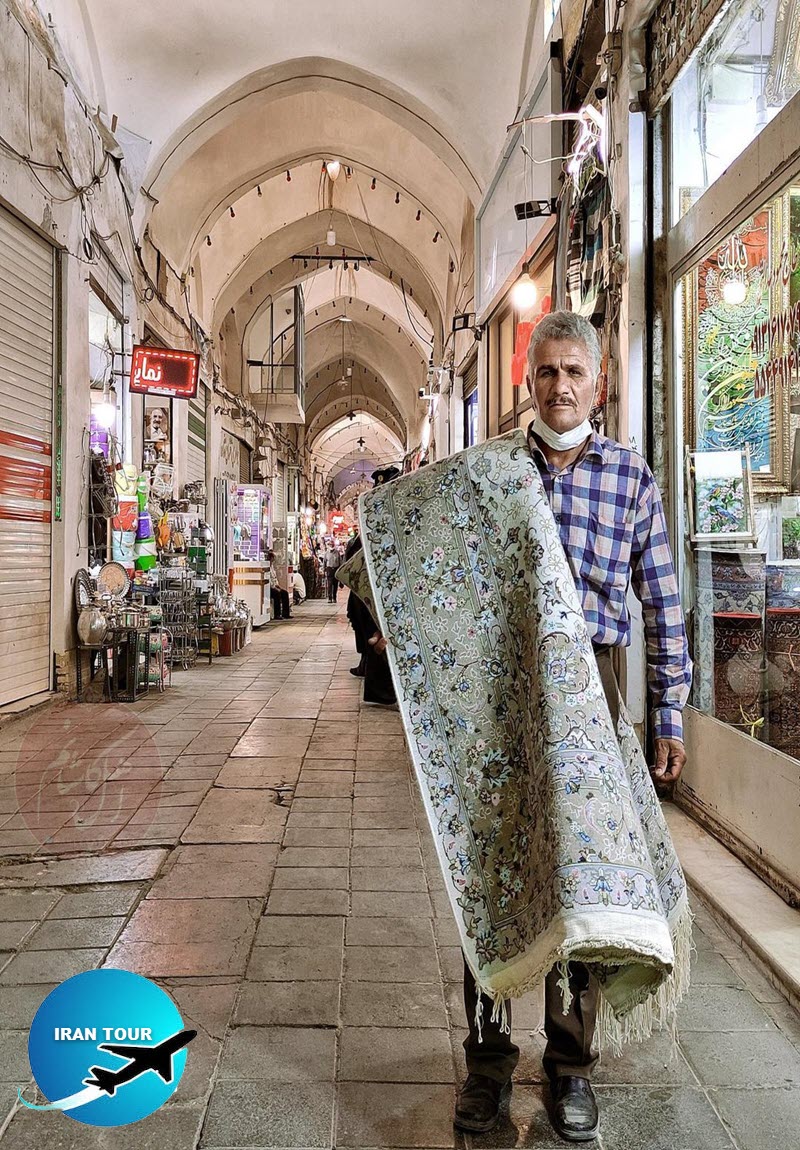 |
Bazaar
Kashan's historic bazaar is one of the best in Iran. Busy but not manic, traditional but with a nod at modern goods, large enough to surprise but not to get lost in, it's a great place to wander for a couple of hours, especially in the late afternoon when the lanes are full of shoppers. The multi-domed roof of the bazaar dates from the 19th century, but the site has been the center of trade in Kashan for almost 800 years. Two main alleys lead through the bazaar, one known as the 'Main Line', and the other as the 'Copper Line', which lives up to its name for at least part of its length. Step off either of these two thoroughfares, and there's a wealth of caravanserais, mosques, Madrasehs, and Hammams (public bathhouses) to explore. Chief among the attractions is the fine Amin al-Dowleh Timche, a caravanserai with a soaring, beautifully decorated dome. Dating from 1868, the caravanserai has recently been restored by the Kashani Culture & Heritage Office and is home to carpet sellers and the odd curiosity shop. There's a tea stand at one of its entrances where you can sit and watch a steady stream of shoppers pass by. An equally popular tea stop is the cozy 19th-century Hammam-e Khan, where three generations of Hammami tend to the well-being of their customers - replacing the tea and towels of former times with the tea and talk of today. Other notable features of the bazaar include the Seljuk-era Masjed-e Soltani (Soltani Mosque), located on the Main Line and open only to men, and the 800-year-old Mir Emad Mosque, along the Copper Line.
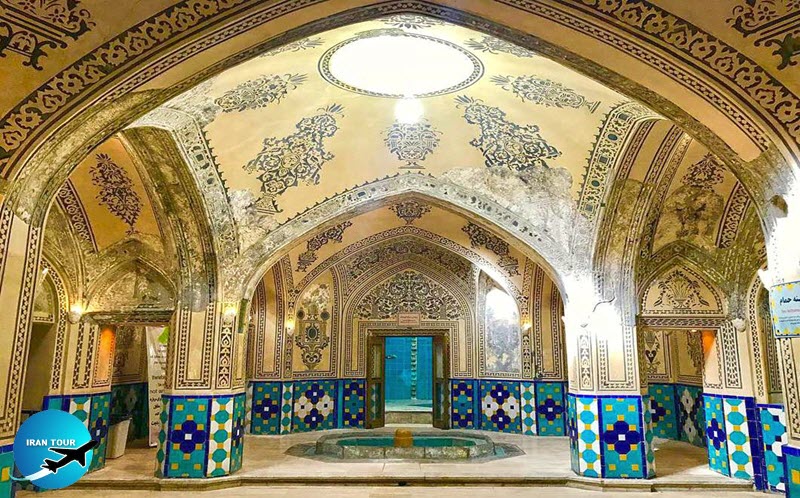 |
Hammam E Sultan Amir Ahmad
Sultan Amir Ahmad Bath is a 500-year-old hammam that is a superb example of an Iranian bathhouse. A recent restoration has stripped away 17 layers of plaster (note the wall inside the second room) to reveal the original Sarough, a type of plaster made of milk, egg white, soy flour, and lime that is said to be stronger than cement. Richly colored tiles and delicate painting feature throughout, and a further highlight is the panorama of the town's minarets and Badgers viewed from the roof.
Twisting corridors is a feature of Kashani architecture, designed to maximize the privacy of the household; here in the bathhouse, the purpose was to keep in the steam. Visitors would have used the antechamber to disrobe and store their shoes (in the lit alcoves at floor level) and would have proceeded to the inner rooms for a scrub-down. Bowls made of copper, used for their conductive properties, were used for heating the water and pipes channeled the water underground heating the floors. Hammams were never just about ablutions, though; they primarily functioned as a meeting place where politics would be discussed and marriages made and where men and women, assigned access at different times, could relax in their own company. Importantly, then, the glazed glass in the domes allowed light to filter in while keeping peeping toms out.
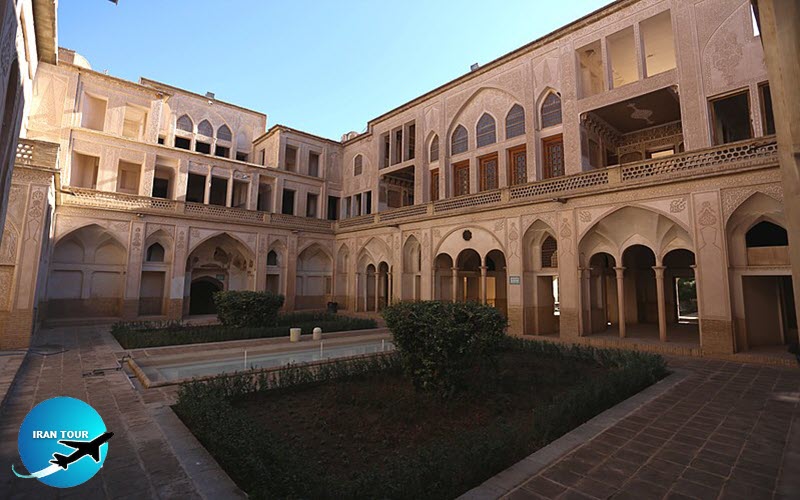 |
Khan E Abbasian
Khan E Abbasian or Abbassi House Built by a wealthy glass merchant, this handsome set of six buildings (signposted from the hammam) is spread over several levels. The numerous courtyards, which are subterranean - excavated from the soil, not built on top of it - are designed to enhance the sense of space by increasing in size and depth as the complex unfolds. As a result and despite illusion, the multistorey buildings are no higher than neighboring properties in the old district.
The high porticos and reception halls are decorated with plaster reliefs and fine mirror work, but most of the note is the exceptionally beautiful and detailed stained-glass windows, befitting of the house's original owner. The house's Khadameh (servants' quarters) has been converted into a teahouse and restaurant selling delicious Iranian cuisine. For those interested in herbal remedies, there is a small shop in the gallery above the teahouse selling a range of infusions.
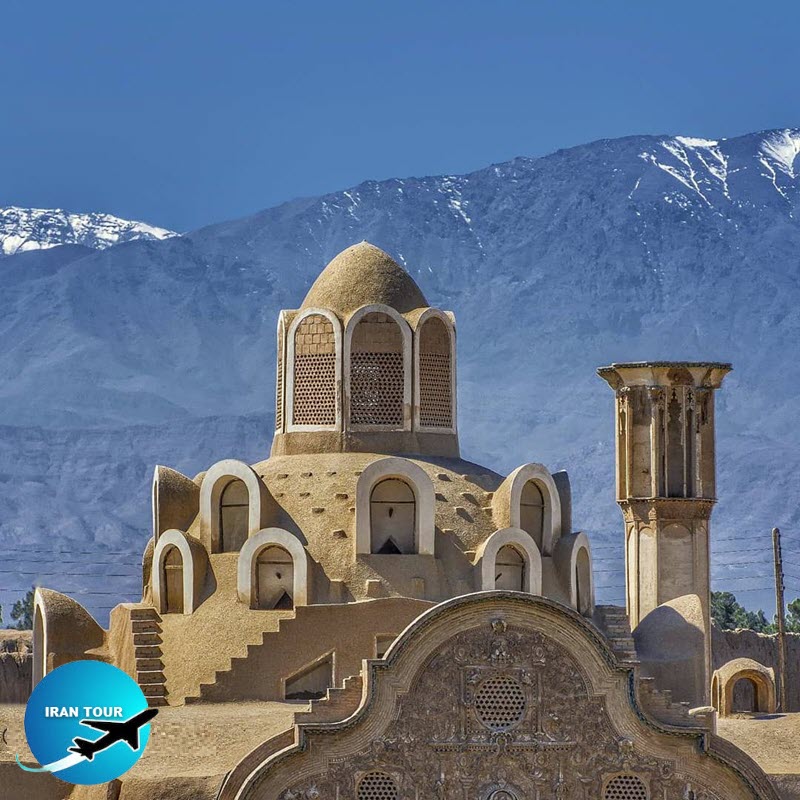 |
Khan E Boroujerdi
Legend has it that when Sayyed Jafar Natanzi, a samovar merchant known as Boroujerdi, met with carpet merchant Sayyed Jafar Tabatabaei to discuss taking his daughter's hand in marriage, Mr. Tabatabaei set one condition: his daughter must be able to live in a home at least as lovely as his own. The result - finished some 18 years later - was the Khan-e Boroujerdi. Made distinctive by its six-sided, domed Badgirs, the house boasts frescoes painted by Kamal al-Molk, the foremost Iranian artist of the time. The home originally consisted of two sections, an Andaruni (private part of a traditional home, where only immediate family are welcome) and a Biruni (outer part of a traditional home, where guests are entertained), but today only the latter is open to the public. Ornately decorated, the courtyard is laid out around a central fountain pool, that sits well below ground level to help reduce the ambient temperature. At its far end is a two-story iwan (open reception hall opening onto the courtyard) that is sumptuously decorated with splendid motifs above the entrance, intricate muqarnas (stalactite-type stone carving used to decorate doorways and window recesses), and fine glass and mirror work. Among the many delightful details to look out for are a samovar enshrined in the plasterwork in honor of the owner, a medallion carpet of stucco in one of the adjoining rooms, and a man appearing to leap above a bridge following his two donkeys in an alcove painting. Finding exactly where each of these treasures is located is part of the fun of enjoying this wonderful building.
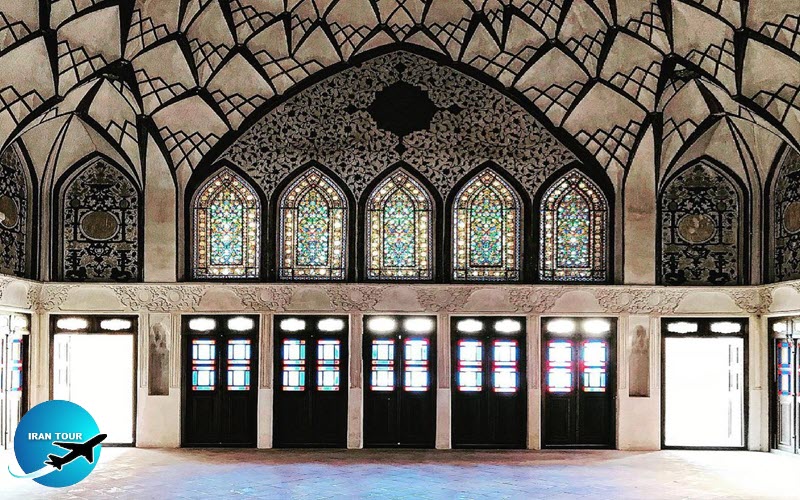 |
Khan E Tabatabaei
Khan E Tabatabaei or Tabatabai House Built around 1880, Seyyed Jafar Tabatabei's house is renowned for its intricate stone reliefs, including finely carved cypress trees, delicate stucco, and striking mirror and glass work. The seven elaborate windows of the main courtyard (most houses sport only three or five) are a particular wonder, designed to illustrate the high social status of the owner. The house is arranged around four courtyards, the largest of which boasts a large pond with fountains, helping to keep the courtyard cool. From mid-afternoon (depending on the month), sunlight and stained glass combine to bathe some rooms in brilliant color.
What to visit more in Kashan?
Kashan with a collection of the most beautiful tourist sites (historical-cultural-artistic) is one of the most beautiful tourist cities in Iran, which has a special role in Iran's tourism industry. You can visit the unique beauties of Kashan by arranging different one-day, two-day, or three-day tour programs.
Please contact our consultants(24/7) for the best advice to visit this beautiful tourist city.
- Details
- Category: Where to go in IRAN